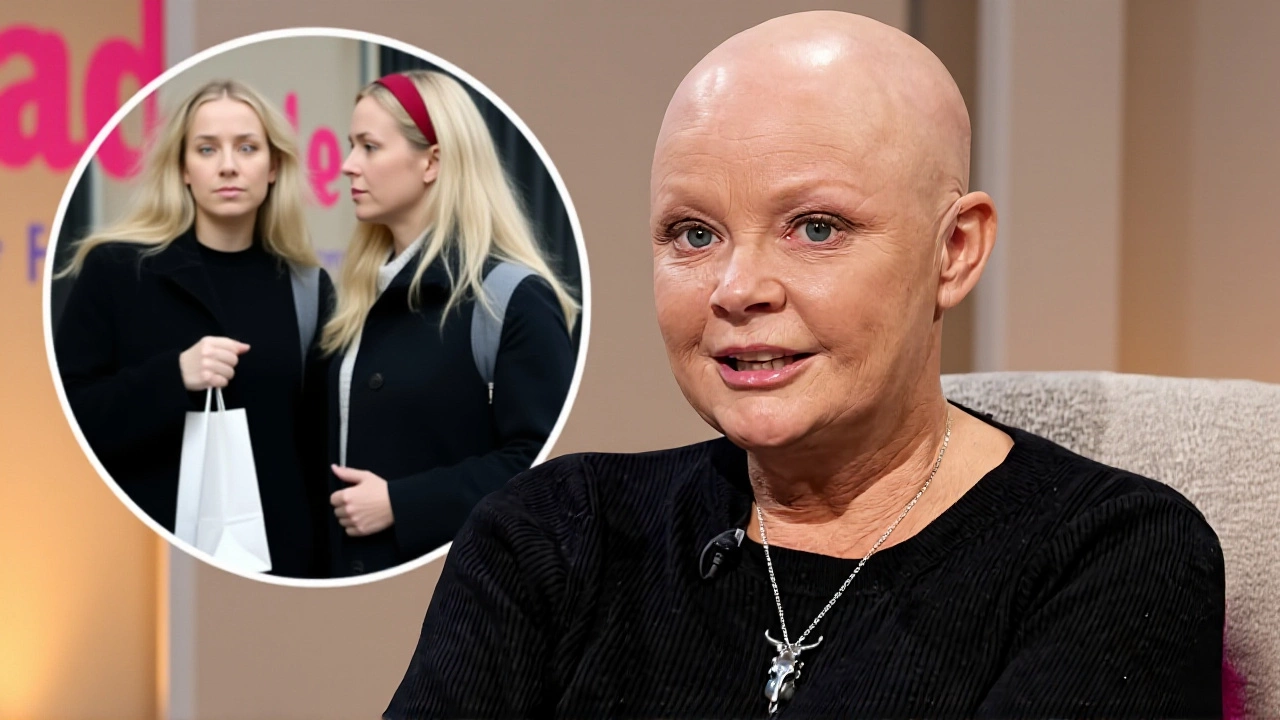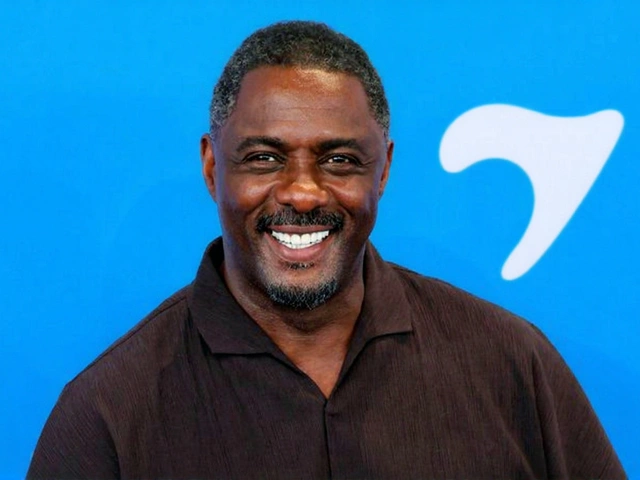
When Gail Porter sat down in front of the camera for BBC Scotland’s documentary Being Gail Porter, released on January 16, 2020, Scotland, she didn’t hold back. "It’s basically like I went bonkers," she said, her voice steady but eyes wet. "I got locked up. And this is what happened. This is the journey. I want to make people know that mental health affects everyone." What followed wasn’t just a personal confession—it was a raw, unfiltered window into the life of one of the UK’s most visible women, who, despite appearing on billboards and TV screens, was crying alone in her kitchen every night.
The Public Face, The Private Collapse
Gail Porter’s name once meant glamour. In the early 2000s, her naked image—projected onto the Houses of Parliament in London—helped sell over a million copies of FHM. She hosted prime-time shows, appeared on What Do Kids Know? alongside Rufus Hound, and even narrated Inside The Zoo for BBC Scotland in 2020. But behind the camera flashes and studio lights, Porter was unraveling. "I was still crying when I went home," she admitted in the documentary. Her professional triumphs didn’t shield her from post-natal depression, anorexia, self-harm, or the devastating hair loss of alopecia—a condition that began before 2006 and resurfaced violently after a brief recovery.By 2014, she was sleeping rough on a park bench in Glasgow. No family nearby. No safety net. Just a woman who had once been a household name, now invisible to the world that once celebrated her.
The Sectioning: When Love Became a Legal Tool
On September 8, 2011, , Porter told BBC Radio 5 Live’s Phil Williams something chilling: the signature on her involuntary commitment papers under the Mental Health Act 2007 wasn’t from a doctor or a social worker. It was her then-boyfriend’s. She’d texted him, "I feel suicidal." He signed. She spent 17 days in a psychiatric unit. "I felt no benefit," she said. "The staff were amazing—but the system was underfunded. They were doing their best with nothing."That moment crystallized a painful truth: even when you’re screaming for help, the system can fail you—and sometimes, the person you trust most becomes the one who locks you away.
Alopecia, Identity, and the Mirror
Porter’s battle with alopecia began long before the mental health crisis peaked. In May 31, 2006, , BBC ONE aired Gail Porter Laid Bare, a documentary where she first spoke publicly about losing her hair. At the time, she’d regained three-quarters of it. By the end of 2010, it was gone again. "It wasn’t just about looks," she said. "It was about identity. People didn’t recognize me. I didn’t recognize myself."Her 2007 autobiography, Laid Bare: My Story of Love, Fame and Survival, became a lifeline for others. But it didn’t stop the spiral. The documentary Being Gail Porter isn’t a sequel—it’s a reckoning. She shows her bald scalp, her scars, her medication bottles. No filters. No makeup. Just truth.

Why This Matters Now
Porter’s story isn’t unique. But her willingness to speak, decade after decade, is rare. She’s one of the few public figures in the UK to document mental illness from peak fame to rock bottom—and still show up. Her advocacy has helped shift conversations in Scotland, where mental health services remain stretched thin. In 2022, she co-hosted Spooked Scotland, not as a former star trying to relive glory, but as someone who’s survived—and wants others to know they can too."Thought I’m good enough? Am I not good enough? You were good enough—and you still are," she says near the end. "No one can tell you otherwise. But unless you’re careful… they can be casualties. And we must try."
Her message is simple: mental illness doesn’t care how famous you are, how much money you make, or how many people you’ve made smile on TV. It can take you down—no warning, no mercy.
What’s Next for Gail Porter?
Porter, a black belt in karate, says she’s rebuilding—not for the cameras, but for herself. She’s still working, still speaking, still pushing for better funding for community mental health services in Scotland. She’s also mentoring young people struggling with similar diagnoses: bipolar disorder, borderline personality disorder, and the crushing loneliness that comes with both."I’m not here to be a hero," she told a small audience in Edinburgh last year. "I’m here because I didn’t want anyone else to feel as alone as I did."
Frequently Asked Questions
How did Gail Porter’s alopecia impact her mental health?
Gail Porter’s alopecia wasn’t just a physical condition—it became a symbol of loss and identity erosion. After losing her hair in the early 2000s and experiencing partial regrowth by 2010, the sudden return of hair loss deepened her depression. She described staring at her reflection as a daily battle, saying people no longer recognized her, and she no longer recognized herself. This visual change amplified feelings of worthlessness, especially when paired with her bipolar disorder and post-natal depression.
Why was Gail Porter involuntarily committed by her boyfriend?
In 2011, after texting her boyfriend that she felt suicidal, he signed the legal paperwork to have her sectioned under the Mental Health Act 2007. While the law allows non-medical individuals to initiate detention in emergencies, Porter later said she felt betrayed and powerless. She praised the hospital staff but criticized the system’s lack of safeguards, noting that her vulnerability made her an easy target for someone who may not have understood her condition fully.
What role did BBC Scotland play in her mental health advocacy?
BBC Scotland gave Gail Porter a platform to tell her story without sensationalism. Unlike tabloid coverage, their documentaries—starting with Gail Porter Laid Bare in 2006 and culminating in Being Gail Porter in 2020—allowed her to speak at length, with dignity. The network also paired her story with others, like Stephanie’s, creating a broader narrative about mental health in Scotland, helping normalize conversations in communities where stigma still runs deep.
How has public perception of mental health changed since Porter’s first documentary in 2006?
Since 2006, public awareness has grown, especially after high-profile figures like Prince William and Harry launched the Heads Together campaign. But Porter points out that awareness hasn’t always translated to access. In Scotland, mental health services remain underfunded, with long waiting lists for therapy. She says people are "starting to think twice" before judging someone’s behavior—but until funding catches up, people like her will continue to fall through the cracks.
What are the long-term effects of being sectioned under the Mental Health Act?
Being sectioned can lead to lasting trauma, including feelings of betrayal, loss of autonomy, and stigma. Porter said she never felt supported during her 17-day stay, despite kind staff. Many patients report being treated as a risk rather than a person. In Scotland, data from 2019 showed over 1,200 involuntary detentions annually, with 40% involving people under 35. Porter’s experience highlights the urgent need for trauma-informed care and better family education around mental health crises.
Is Gail Porter still active in mental health advocacy today?
Yes. Though no longer in the spotlight as a TV presenter, Porter continues speaking at universities and mental health forums across Scotland. She’s partnered with local charities like Mind and SAMH to support youth programs and has been a vocal critic of cuts to community mental health services. Her message remains consistent: recovery isn’t linear, silence is dangerous, and everyone deserves to be heard—even when they’re at their lowest.




